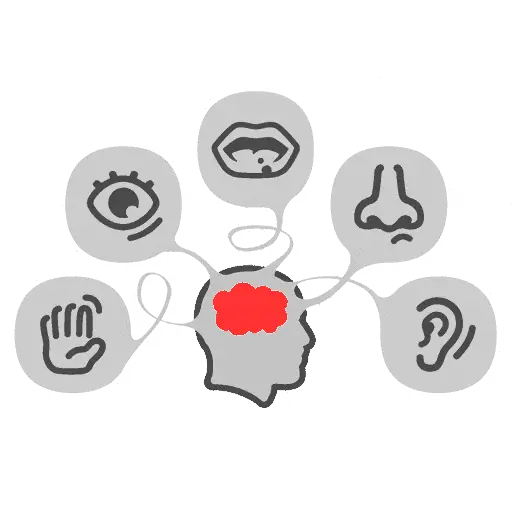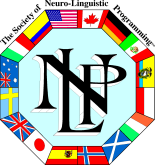
ประสาทสัมผัสทั้งห้าของเรา หรือระบบการแสดงภาพของเรา เรียกว่า ลักษณะเฉพาะ ใน NLP ลักษณะเฉพาะย่อยคือคุณสมบัติพิเศษของประสาทสัมผัสที่รับรู้โดยประสาทสัมผัสทั้งห้า ลักษณะเฉพาะย่อยเหล่านี้สามารถมองได้ว่าเป็นพารามิเตอร์ของลักษณะเฉพาะต่างๆ เพื่อเริ่มต้น เราขอแนะนำลักษณะเฉพาะย่อยของลักษณะเฉพาะของเรา:
- Visual: รูปภาพ สไลด์หรือภาพยนตร์ สว่างหรือมัว ขนาด (เทียบกับชีวิตจริง) ใกล้หรือไกล โฟกัสหรือไม่โฟกัส ฯลฯ
- Auditory: หูซ้ายหรือขวา, เสียงรอบทิศทางแบบ Dolby, จังหวะของเสียง, คุณภาพของเสียง ฯลฯ
- Kinesthetic: การเคลื่อนไหวของความรู้สึก ความเข้มข้น น้ำหนัก แรงกดดัน ความร้อน ความเย็น ฯลฯ
- การรับกลิ่น: มีกลิ่นอะไรติดมาไหมคะ ฉุน หวาน ฯลฯ
- การรับรส: หวาน เปรี้ยว ขม เป็นต้น
สิ่งเหล่านี้เป็นเพียงตัวอย่างคุณสมบัติของโมดัลลิตี้หรือระบบการนำเสนอ การถามคุณสมบัติเหล่านี้กับบุคคลที่คุณกำลังสัมภาษณ์จะทำให้คุณได้ข้อมูล ดังนั้นจึงบ่งชี้ว่าบุคคลนี้มีความจำเฉพาะเจาะจงอย่างไร ดังนั้น โปรดจำไว้ว่าการใช้คุณสมบัติเหล่านี้จะช่วยให้คุณทำงานได้ง่ายขึ้น ซึ่งจะทำให้ความทรงจำของบุคคลที่คุณทำงานด้วยไม่เปิดเผยตัวตนมากที่สุด สุดท้ายแต่ไม่ท้ายสุด โปรดทราบว่าคุณกำลังถามคุณสมบัติเท่านั้น ไม่ใช่เนื้อหา
เนื่องจากลักษณะย่อยเป็นคุณสมบัติของการรับรู้ทางประสาทสัมผัส การตีความเป็นการประเมินรองที่ซับซ้อนของการรับรู้และความหมายของการรับรู้ กล่าวอีกนัยหนึ่ง ลักษณะย่อยคือวิธีที่เราเข้ารหัส จัดเก็บ และถอดรหัสประสบการณ์ที่เรามีในชีวิต
ย่อยลักษณะทางสายตา
รูปแบบย่อยของภาพคือคุณสมบัติและลักษณะเฉพาะของวิธีที่เรารับรู้ข้อมูลภาพ ซึ่งจะช่วยให้เราเข้าใจและตีความสิ่งที่เราเห็นได้ ต่อไปนี้คือลักษณะย่อยทางสายตาที่สำคัญบางประการ:
- สีสัน: หมายถึงเฉดสีที่เรารับรู้ เช่น สีแดง สีน้ำเงิน หรือสีเขียว สีต่างๆ สามารถกระตุ้นอารมณ์และการตอบสนองที่แตกต่างกันได้
- รูปร่าง: แสดงถึงโครงร่างและรูปแบบของวัตถุ เช่น วงกลม สี่เหลี่ยม หรือรูปร่างที่ไม่ปกติ รูปร่างช่วยให้เราระบุและจัดหมวดหมู่วัตถุได้
- ความเคลื่อนไหว:อธิบายถึงการเคลื่อนที่ของวัตถุในสนามการมองเห็นของเรา รวมถึงความเร็วและทิศทาง การเคลื่อนไหวสามารถดึงดูดความสนใจของเราและสร้างพลวัตให้กับฉากได้
- ความสว่าง:เกี่ยวข้องกับความเข้มของแสงในภาพ ความสว่างสามารถส่งผลต่ออารมณ์และการมองเห็น ทำให้วัตถุโดดเด่นหรือจางลงในพื้นหลัง
- ความลึก: สัมพันธ์กับการรับรู้ระยะทางและสามมิติ การระบุความลึก เช่น มุมมองและการแรเงา ช่วยให้เราเข้าใจว่าวัตถุอยู่ห่างจากเราเพียงใด
เมื่อรวมกันแล้ว รูปแบบย่อยเหล่านี้จะกำหนดประสบการณ์การมองเห็นของเรา และมีอิทธิพลต่อวิธีที่เราตอบสนองต่อสภาพแวดล้อมของเรา การทำความเข้าใจจะช่วยเพิ่มทักษะในการสื่อสาร ศิลปะ และการออกแบบ
โหมดย่อยของเสียง
รูปแบบย่อยทางการได้ยินหมายถึงลักษณะเฉพาะของเสียงที่มีอิทธิพลต่อวิธีที่เรารับรู้และตีความข้อมูลทางหู นี่คือรูปแบบย่อยทางการได้ยินที่สำคัญบางส่วน:
- ระดับเสียง: หมายถึงความดังหรือความเบาของเสียง การเปลี่ยนแปลงระดับเสียงสามารถสื่อถึงอารมณ์ บ่งบอกถึงความสำคัญ หรือดึงดูดความสนใจ
- ขว้าง:ระดับเสียงจะอธิบายว่าเสียงสูงหรือต่ำเพียงใด ระดับเสียงที่แตกต่างกันสามารถทำให้เกิดความรู้สึกที่แตกต่างกัน และช่วยแยกแยะระหว่างเสียงต่างๆ เช่น โน้ตดนตรีหรือเสียงร้อง
- จังหวะ:นี่คือความเร็วในการเล่นเสียงหรือดนตรี จังหวะที่เร็วสามารถสร้างความตื่นเต้นหรือความเร่งด่วน ในขณะที่จังหวะที่ช้าอาจสร้างความสงบหรือการไตร่ตรอง
- โทนสี: คุณภาพหรือลักษณะของเสียง มักได้รับอิทธิพลจากระดับเสียงและความดังของเสียง โทนเสียงสามารถแสดงอารมณ์ เช่น ความโกรธหรือความสุข ผ่านการพูดหรือดนตรี
- จังหวะ:ซึ่งเกี่ยวข้องกับรูปแบบของเสียงและความเงียบในช่วงเวลาต่างๆ ซึ่งส่งผลต่อการไหลลื่นและการเคลื่อนไหวของดนตรีหรือการพูด จังหวะสามารถสร้างโครงสร้างและดึงดูดผู้ฟังได้
รูปแบบย่อยทางการได้ยินเหล่านี้ทำงานร่วมกันเพื่อกำหนดประสบการณ์การได้ยินของเรา โดยส่งผลต่อวิธีการที่เราเข้าใจและตอบสนองต่อเสียงต่างๆ ในสภาพแวดล้อม การสื่อสาร และศิลปะของเรา


